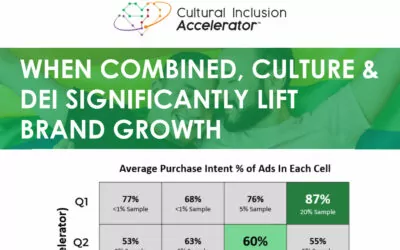Carlos Santiago (pictured below), co-founder of the Alliance for Inclusive and Multicultural Marketing (AIMM), the cultural branch of the Association of National Advertiser (ANA), speaks exclusively to ExchangeWire about the purpose and benefits behind the organisation’s new CIIM metric.
1. What are the main objectives for the introduction of the CIIM metric?
CIIM intends to prove the value of multicultural and inclusive advertising from a subjective conversation to an objective, empirical fact, demonstrating that culture enhances consumer connections while adding substantial incremental value to brands.
2. What does the quantification of cultural drivers mean for brand marketers and agencies? How have these advertisers benefited from analysing their marketing output using CIIM?
AIMM’s 2018 Multicultural & Inclusive (MC&I) Benchmark study revealed that nearly all advertisers believed they were addressing multicultural and inclusive audiences in their advertising – yet only 16% of them included cultural nuances in communications across all segments. CIIM is the first metric of its kind that invites all consumer segments to assess ads through the lens of key cultural drivers correlated to impact including: inclusion; respect for culture; highlight of cultural values; authentic portrayals; positive reflections; cultural celebration and cultural pride.
The initial study collected more than 31,000 evaluations of 150 broadcast and digital video ads from 79 brands across 10 industries among Asian (English), African American, Hispanic (English and Spanish), LGBTQ, People with Disabilities, and Non-Hispanic White audiences to calculate how culturally relevant they perceived ads targeting them directly as well as how they perceived ‘general’ ads targeting all. Each tested ad received CIIM scores for the targeted segment as well as for the corresponding control group of “all other segments.” The scores by cultural attribute and effectiveness KPI provide critical guidance to brands, planners and creative that would enable them to identify the strength and weaknesses of the executions in order to calibrate future efforts and provide meaningful benchmarks of performance against competitors among other norms.
3. What should advertisers scoring poorly in CIIM analysis consider when improving their ads, from both a cultural and effectiveness standpoint?
Lower CIIM scores serve advertisers in many ways: from informing the creative approach to media planning and media buying. What CIIM’s dashboard illustrates for advertisers is where an ad may have fallen short for a particular consumer segment. Low CIIM scores might signal to the marketer that the cultural attributes in the ad tested did not connect strongly with the desired target. But, not every ad is necessarily meant for every target consumer – in fact, of the 150 ads tested, only seven ads scored in the top quartile of CIIM scores across all audiences – proving that “appealing to everyone with equal impact,” commonly known as a “Total Market Approach,” is a very difficult task.
4. How will the CIIM metric be evolved over the coming year? How will testing be altered to evaluate advertising output in near real-time?
CIIM is now open to all marketers – any advertiser can submit an ad for testing at any time and receive results in near-real time rather than in set wave periods. In 2020, CIIM has expanded to measure communications across all media including audio, more forms of digital, social media, print across all previous consumer segments, plus Asian languages. CIIM has also evolved to test ads at almost any stage in the marketing process: pre-test (animatic; rough cut); near final; final; on-air.
5. What other initiatives are AIMM working on currently? How will the CIIM metric support these?
In September 23, 2019, AIMM also launched the CTA #SeeALL. #SeeALL is a call to action – asking brands to accurately reflect ALL Americans in advertising – to show the reality in which we live.



